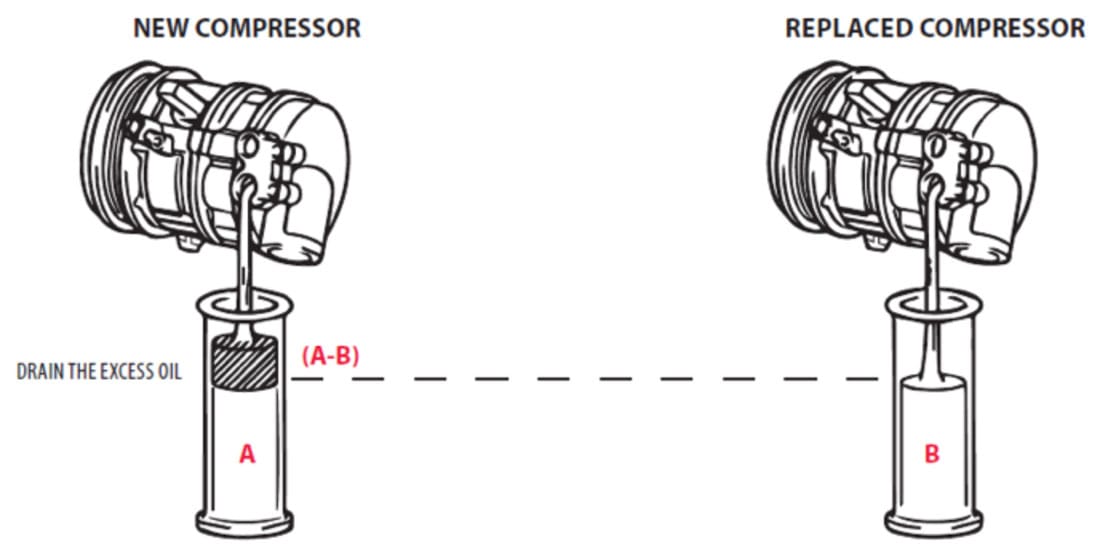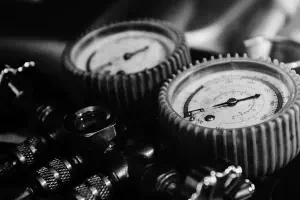The ideal scenario when replacing a compressor with a new compressor is to totally flush an air-conditioning system starting with a completely clean system and known amount of oil.
It is possible in some situations where there has been an external failure and there is definitely no internal contamination to the compressor or rest of the system to “balance” the oil in the complete system. The term balance refers to getting the total amount of oil that is distributed through a system correct. In a new system the correct amount of oil is initially totally in the compressor but when the compressor runs this becomes distributed with the refrigerant through the entire refrigerant circuit.
Too little oil will result in compressor failure and too much may lead to poor performance and again compressor failure. Poor performance is due to the oil in the condenser and evaporator limiting the ability of the refrigerant to pass off or absorb heat by coating the inside of these parts with this excess oil or limiting the amount of tubes available to refrigerant in multipass condensers and evaporators as oil settles to the bottom.
Balancing is achieved by draining the old compressor and measuring the amount of oil in it. The new compressor is drained and the amount of oil that was measured from the old compressor is replaced back into the new compressor from the new oil removed. Alternatively if the amount of oil in the new compressor is known, the difference between that amount and the amount in the old compressor can simply be removed from the new.

When separate parts are also being replaced there is a simple chart to use suggesting the amount of oil to be replaced to account for the oil in these parts.[/
Replacement Parts
Replenishment Quality
* Compressor - Refer to During Compressor Replacement
* Condenser - 40CC
* Evaporator - 40CC
* Receiver - 10CC
* Piping Type - 10CC (Per Pipe)
Type
- Swash Plate and Scroll Type Compressor: ND-Oil8
- Through Vane Type Compressor: ND-Oil9
- Swash Plate and Scroll Type Compressor: Differs according to the vehicle, refer to relevant vehicle repair manual
Some information in this Tech Tip kindly Supplied by Denso Service.





